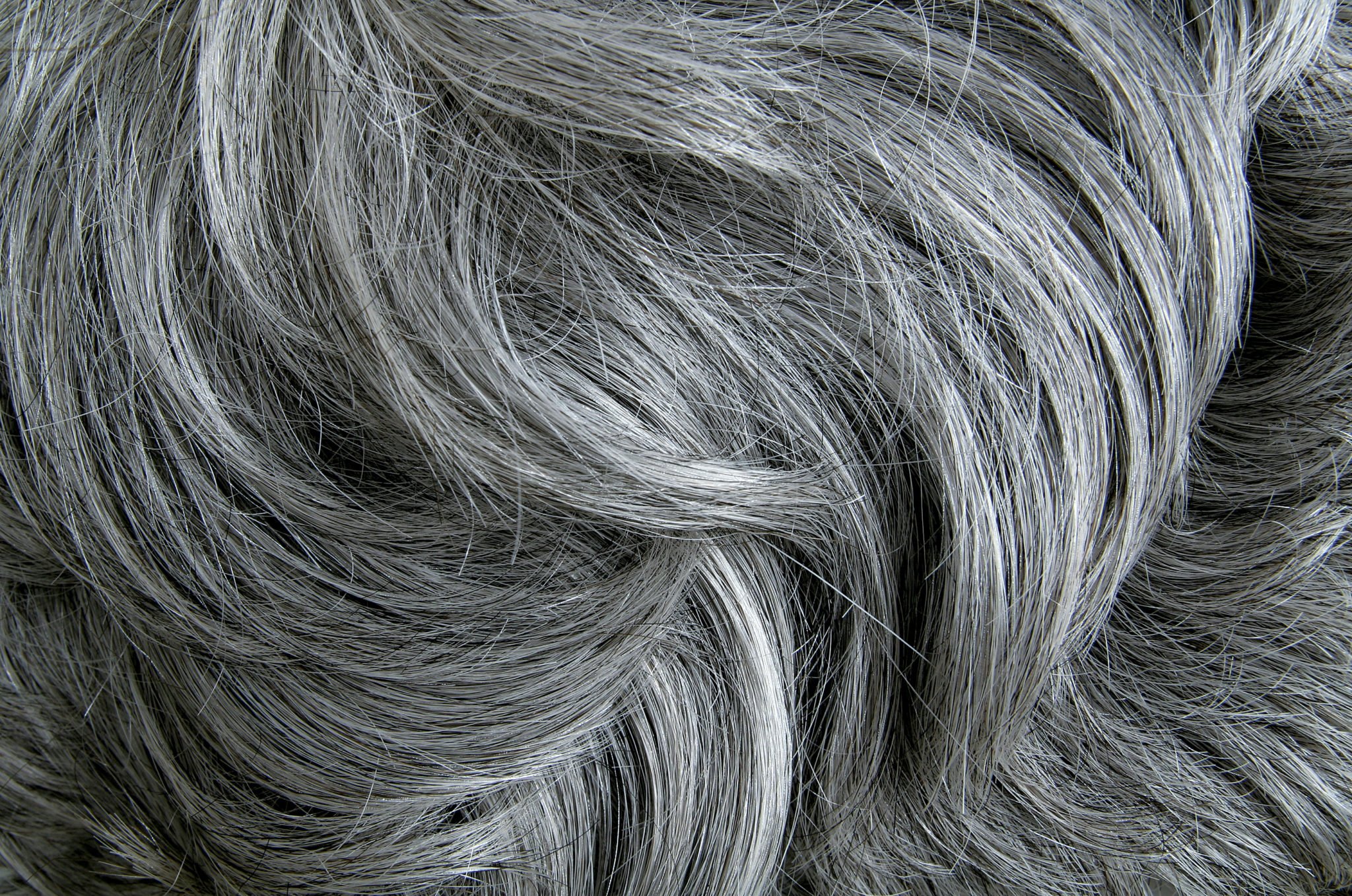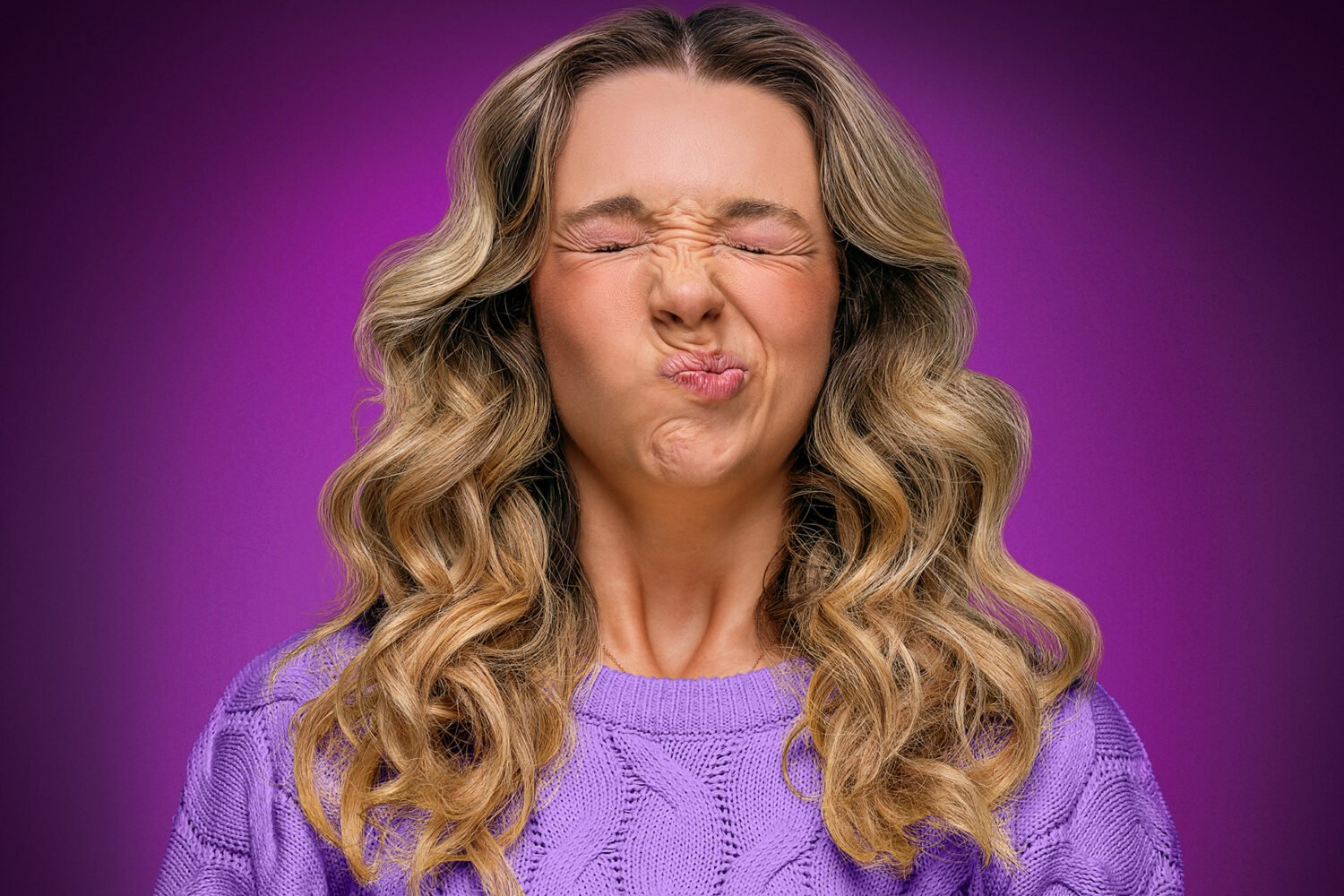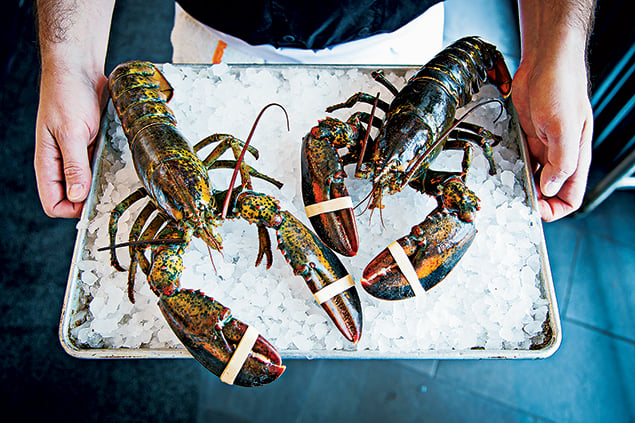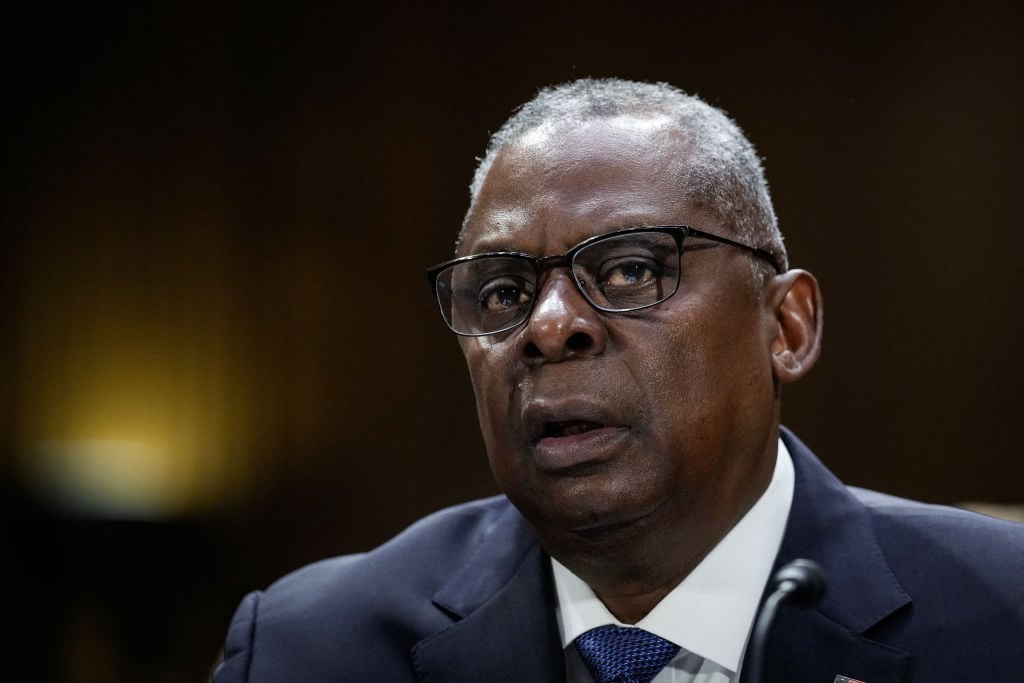Approximately 50 percent of people will find that 50 percent of their hair is gray by the time they turn 50, but to walk around DC, you’d find this statistic awfully suspect. The District is lousy with blondes who can reminisce about the days before dial-up, brunettes who remember rotary phones, redheads who voted for Reagan.
The terminology is telling: You merely get wrinkles, but you go gray. Gray is a destination, a change of emotional address. A Census report on the “rapidly aging” population of the United States is titled “The Graying of America,” suggesting, in an official government document, that nothing communicates “aging” quite like the drop in color production at the hair follicle. This national graying, like the universe, is rapidly expanding. Yet it seems the aesthetic of our region is moving in the opposite direction.
It’s no wonder so many Washingtonians color their hair—ours is a city filled with people whose careers are contingent upon their continued relevance, or the appearance thereof; people who need to project vigor, savvy, and strength; people who say “optics” unironically.
Women have been dyeing their hair in droves ever since Clairol introduced its at-home hair color, Miss Clairol, in 1956, the first kit that enabled customers to bleach and dye their hair in one step in the privacy of their bathrooms. This normalized hair coloring for women who were neither movie stars nor prostitutes—so a significant slice of the population. In the previous decade, only 7 percent of women were coloring their hair. These days, as many as 87 percent of women do, according to Anne Kreamer, author of the 2007 book Going Gray: What I Learned About Beauty, Sex, Work, Motherhood, Authenticity, and Everything Else That Really Matters.
According to Kreamer’s research, she tells me, “women spend more time dyeing their hair than they do having sex.” This holds, she claims, across ages and demographics. “I calculated in the 25 years that I had dyed my hair, I probably spent $65,000 total. So imagine what I could have done had I invested that money! We spend a lot of time, a lot of money—there’s opportunity costs associated with doing it on some level. But it’s a nonnegotiable thing. Women just feel like, ‘This is one of the line items in me successfully running my life.’ ”
In an interesting move toward a kind of gender equality, women aren’t alone in feeling the pressure to camouflage this sign of aging. Today, 11 percent of men ages 50 to 64 dye their hair, up from 7 percent in 2010, which was a rise from just 2 percent in 1999, according to the market-research firm Multi-sponsor Surveys. The number is surely higher among the age 30-to-49 set, considering that that’s the window in which most people’s gray begins to show. Not that anybody’s talking about it.
I ask Guillaume Philippe Choquet, owner of O Salon in Georgetown, if any of his hair-color clients will speak to me about hiding their gray. His response is immediate laughter. “Among my clientele, we have socialites, politicians,” he says. “People who color their gray hair would never tell you they color their gray hair. I know so many clients who say to never book an appointment at the same time as their husbands.”
Hiding gray is like listening to Ed Sheeran or watching pornography: Though the data would indicate a great many people do it, no one will cop to it.
In Washington, professional concerns are paramount. Choquet says he can sense the fluctuations in the economy based on the frequency of hair-color visits among his clients. A woman dyeing her hair typically comes in ten times a year. When a recession hits, that drops to seven.
“The reality is when the economy is bad, you’re going to stay in the job you occupy, [where] they already know you as you are,” he says. “When the economy is good, that’s when you start thinking, ‘Maybe I could get a better job.’ And that’s when you reinvent yourself, try to go younger.”
Salon owner and colorist Ian McCabe’s clientele is full of “very powerful women,” he says. “Some of them come every two weeks. They take it that seriously, that they don’t want grays to be seen.”
Both salon owners have seen their male client base grow in the past decade or so. “You have a lot of young people who are coming into the market, and they’re trying to compete in new technology,” Choquet says. “You want to look like the new kids on the block. You don’t want to look like you were there when they invented the internet.”
The coloring technique differs for men, who typically have shorter hair and can’t hide their roots by flipping their part, as women often do. For male clients, McCabe prefers “using semipermanent color to blend and reduce the gray, [rather than] completely covering it,” he says. “I’m not a huge fan of 100 percent coverage, not a gray to be seen, because I don’t think it wears well as it grows out.”
Because rigid standards of masculinity are crushing for us all, men are even more concerned with the illusion that their hair color is natural, lest they be caught indulging in the oh-so-feminine vanity of regular trips to the salon. “There’s nothing worse than seeing a guy who obviously colors his hair,” says McCabe. “To me, it’s so cheesy and corny. It should always look blended and grow out well. It shouldn’t be a tell-tale giveaway, like ‘Yeah, he colors it.’ It should just be ‘He looks good.’ ”
These gendered expectations around hair color are perhaps at their most visible, and fraught, in politics.
Joe Biden’s teeth are whiter than white—whiter than Chiclets, than sugar cubes, than his, shall we say, vintage attitude about desegregating schools—but his hair is even whiter and has been for decades. Bernie Sanders’s hair is as thin and white as dental floss. At least five of their fellow male presidential hopefuls (all the ones you can’t tell apart, plus Bill de Blasio) have gone as gray as smoke. Yet only one of their female competitors has any white or gray hair.
“We have been sold this bill of goods about what is acceptable for the way a woman should look, and it is the most constrained for women in politics,” says Kreamer. “They just have been boxed in, [even though] politics is an area of our life and society where wisdom and experience should be the thing that matters the most.”
The lone exception is Tulsi Gabbard, who sports a streak of white that she says sprouted after her deployment to Iraq. She wears it like a flag pin, “as a daily reminder of her experience and purpose,” her sister explained on Twitter. This echoes Choquet’s observation: He says that among his female clients who keep their gray are military mothers, “women whose sons have been sent to Afghanistan, and you notice, in less than six months, these women get more gray hair than any woman you can find.”
Save for that symbolic stripe on Gabbard’s head, it’s difficult to imagine any of the women vying for the presidency with gray hair. “It’s a total double standard, for men versus women,” says McCabe. “It’s not fair, but nothing is. It is what it is.”
For what it’s worth, McCabe isn’t so hot about gray hair on anybody: “There aren’t many people who can pull it off well, generally. There’s less people that look good with it than don’t.”
Hair color is part of your identity, and the thought of losing it simply because you used to be 35 and now, rudely, you are not can feel absurd—especially when an alternative is accessible via your neighborhood salon.
For Phyllis Edelman, who is retired, coloring gray is a way to reclaim her sense of self. Two bouts with cancer and chemotherapy caused her to lose her hair twice in two years. The second time, it grew back in a shade she describes as a “sort-of-gray, the ugliest color hair I’ve ever seen.” The cost of seeing light-brown hair in the mirror is so steep that she refuses to share it (“I don’t think my husband even knows how much it costs me every time”), but she has no doubt the result is worth this unspeakable sum. “For me, it’s like a symbol that I survived.”
For others, though, there’s power in welcoming gray, changing their relationship with their hair instead of battling the color itself. “I think we’ve become more accepting of gray hair in our culture today from ten, 15 years ago,” says Norah Critzos, a stylist at Ferro Salon DC (formerly Cristophe Salon). “I think it has become more mainstream.”
While most women still hide their gray, anecdotal evidence suggests that the minority of women who choose not to are now flaunting it: Entire Instagram feeds, such as @young_and_gray29 and @Grombre, celebrate women with gray hair.
Critzos estimates that about 25 to 30 percent of her clients who are “gray or gray-white or that beautiful steel color” are keeping it that way and turning heads at the salon when they do. “I notice other clients say, ‘Wow, great hair color!’ And that has shifted. Back in the day, people never commented on gray hair unless it was Barbara Bush.”
Critzos did Bush’s hair occasionally and remembers that the former First Lady was “adamant” about maintaining her natural color. “She had a thick, gorgeous, full head of hair. It was stunning. Glistening!” Bush was an exceptional case in her day, but Critzos thinks more women will pick up her mantle. “We’re slowly changing the culture.”
“I happen to think if one of the women [running for President] had Christine Lagarde’s hair color, or Meryl Streep’s in The Devil Wears Prada, they’d rock it and differentiate themselves and look ‘authentic,’ ” says Kreamer. “If more women in senior positions actually had their natural hair color, it would be fantastic.”
In Washington, Choquet concedes, “everything is tied to appearance, [even] your professional life. I work with a lot of professional women, and the reality is when they apply for a new job, we go through the list: What’s the company like? What’s the culture? And with that, I will advise what to do. But the reality is not as simple as ‘You should embrace your gray hair.’ ”
Choquet would be happy if America were more like his native France, where gray isn’t so stigmatized—and certainly isn’t seen as mutually exclusive of hirability or sex appeal: “That would be a perfect world.”
This article appears in the September 2019 issue of Washingtonian.



















